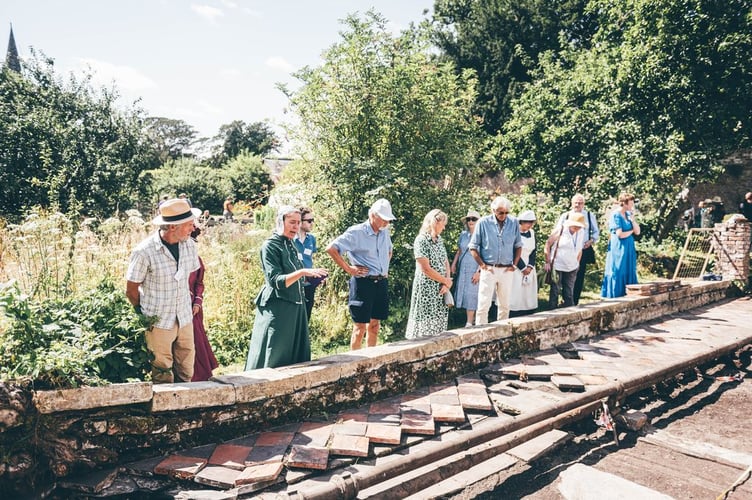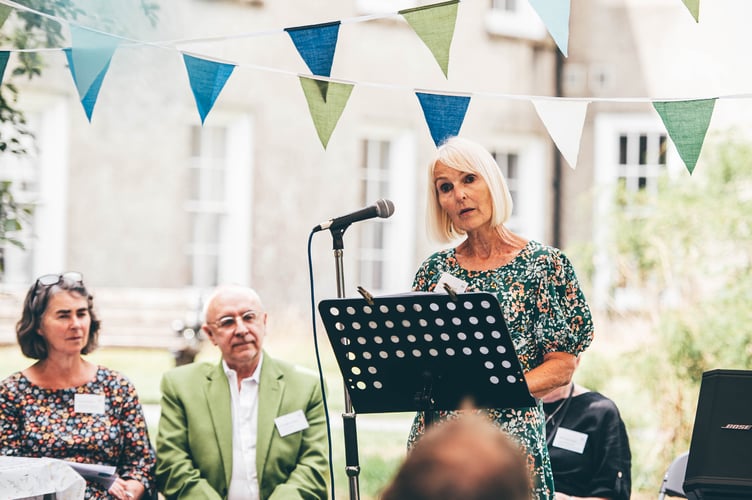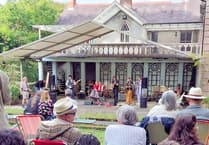A forgotten walled garden in Carmarthenshire, once the beating heart of a bishop’s estate, is set to bloom again thanks to a £1.2 million grant from The National Lottery Heritage Fund. But it’s not just the bricks, glasshouses or ancient orchard being revived – it’s the memories of the people who lived, worked and grew there.
The Tywi Gateway Trust, which has been managing the restoration at Parc yr Esgob (Bishop’s Park) in Abergwili since 2017, is placing these personal stories at the centre of its ambitious new 30-month Walled Garden Project.
As well as rebuilding three historic glasshouses and the gardener’s bothy, the carefully designed restoration will create a multi-functional facility for learning, training, health recovery, wellbeing and celebration events.
The project will also bring the stories of those who once lived and worked there vividly back to life.
Among the most evocative records are the handwritten diaries of Gwenonwy Davies (1887–1981), eldest daughter of Bishop John Owen, who grew up at the Bishop’s Palace: “We grew pineapples for years,” she wrote. “Also we had a lovely vine house, divided into two parts so that there was a sequence of grapes. Another small house had orchids and lots of maidenhair fern growing in it.”
Her vivid descriptions paint a picture of both elegance and hard work in a delicate ecosystem powered by firewood, furnace boys and the steady hands of skilled gardeners.
The Trust is using these records, along with census documents and more recent oral histories, to build a living archive that honours those who worked behind the scenes. One such story is that of 16-year-old Arthur Sinclair Wolstoncroft, who travelled from Lancashire to Abergwili for the prospects on offer as a member of the Bishop’s staff and is listed on the 1911 census amongst the servants as ‘Page’.

Project Manager Louise Austin reflects: “It’s stories like Arthur’s that really capture people’s imaginations. They remind us that heritage isn’t just grand buildings and big events—it’s about people and their everyday lives.”
“This isn’t just a restoration – it’s a conversation across generations.
“It’s about learning from the past while creating something meaningful for the present. We want visitors and volunteers alike to feel a personal connection to this place, and to draw inspiration and experiences from it that can help them in their own lives today.”
The restored garden will host community celebrations, educational activities, and public performances, all shaped by the living memories of those who have walked its paths before.
A new horticultural trainee programme will carry this storytelling tradition forward. Young gardeners involved in the project will share their experiences, adding fresh voices to the garden’s evolving legacy.
It’s a busy time for the project team, who organised a launch for key stakeholders, project volunteers and journalists on July 30.
Volunteer Archaeologists working with a team from Heneb - The Trust for Welsh Archaeology are now exploring the remains of the heating systems in the ruined greenhouses where pineapples and orchids once grew. You can visit the finished excavation on Saturday, August 16 between 2pm and 4pm.

The Walled Garden Project is also receiving match funding of £300,000 from Welsh Government’s Community Facilities Programme, £150,000 from the Garfield Weston Foundation, £100,000 from a heritage philanthropist in Wales and £20,000 from the Pilgrim Trust, as well as much-valued match-funding in kind from volunteer involvement. Altogether the project has a value of around £2 million.
Chair of Tywi Gateway Trust, Betsan Caldwell, said: “We are thrilled by this opportunity to share not just the garden’s physical beauty, but also to draw on its very soul - the stories, skills and quiet wisdom of those who once made it thrive.”

.jpeg?width=209&height=140&crop=209:145,smart&quality=75)



Comments
This article has no comments yet. Be the first to leave a comment.